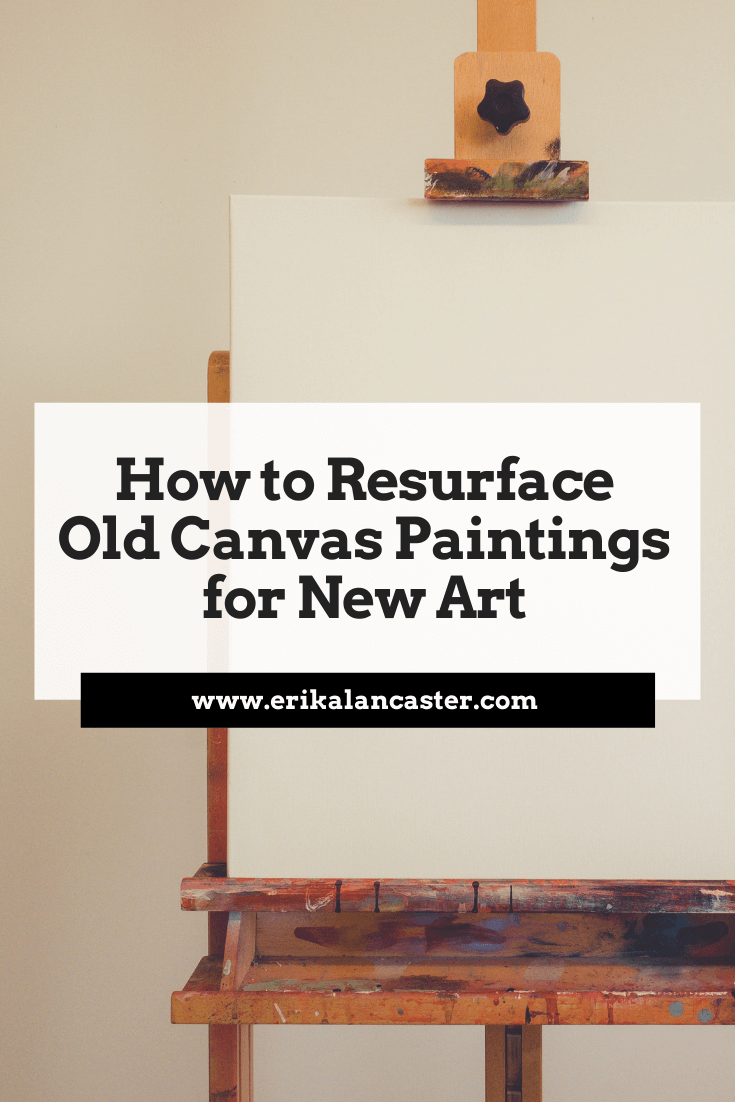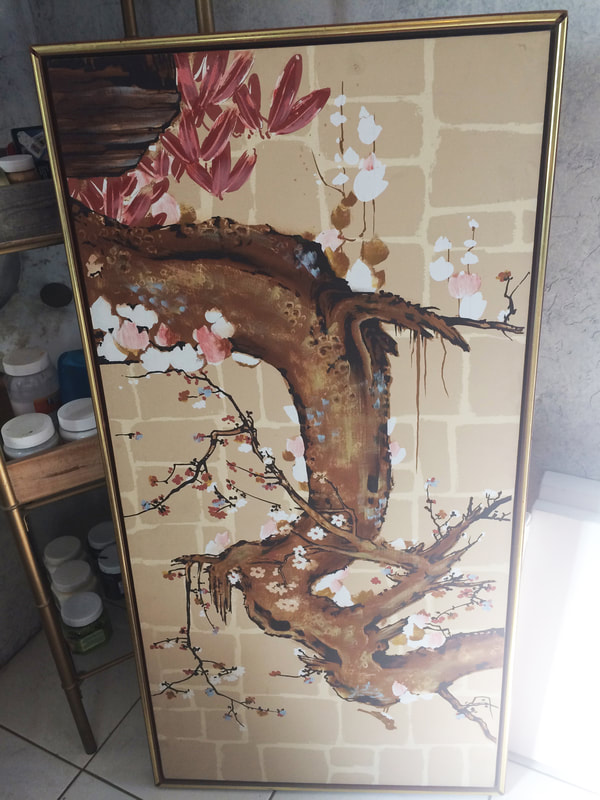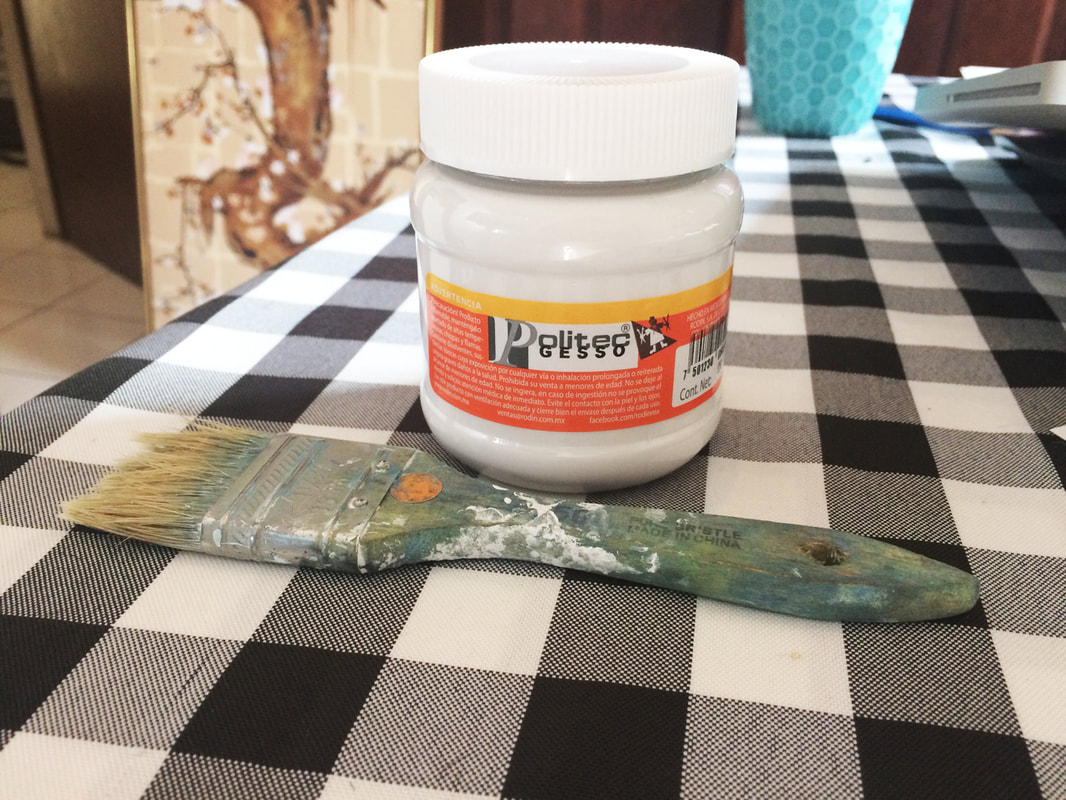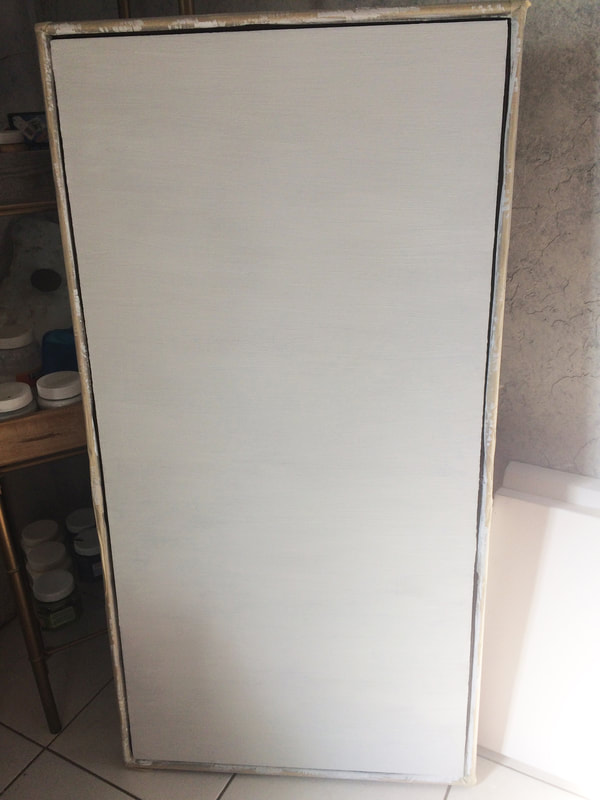|
*This post contains affiliate links. I receive small commissions for purchases made through these links at no extra cost to you. These commissions help me keep this site up and running, in order for me to keep providing helpful and inspiring art content. :)
Do you have old canvas paintings around that are no longer up to par and wonder if you could reuse them to create better art? Interested in moving your painting skills forward and in finding ways to save on supplies? You want to make an omelette? You've gotta break some eggs.
-Tyler Durden (Fight Club)
In today's post, I will be taking you through the process of preparing an old canvas painting in order to reuse it to create a new painting. With just a few tools, you'll be able to have a brand new surface to paint on! I am a firm believer in using what we have and in being as resourceful as possible in our explorations. Because, as most of you already know, us artists need to explore a lot and we have to be smart about how we spend our money. First and foremost, a bit about the original painting. This canvas was a part of an artwork composed of three separate panels (three long rectangles meant to be hung vertically side by side). The paintings around 35 years old. Probably more. Another important note is that these artworks seem to have been created using very thin applications of acrylic paint. It is definitely not oil. And they don’t have much texture to them at all. I took all of these points into consideration when I decided to use them in my oil painting explorations. I knew resurfacing them was going to be easy and that they presented good opportunities for me to work on a size and format I had never worked on before. Canvases with thickly applied paint (either oils or acrylics) or a lot of texture on them will probably require more work because more sanding will have to be done. Secondly, I used regular Gesso I had at hand in order to resurface my canvas. There is a lot of debate whether or not it is ¨safe¨ to use oil paint on a canvas prepped with gesso. A lot of folks believe that it should not be done because it is just a recipe for cracking, peeling and an overall less durable painting. Other artists believe that good quality gesso can serve as base for practically any type of paint or medium. I think it is up to you to figure out if this will work for your specific type of artwork or not, and the only way of finding this out is through first-hand experimentation. Perhaps your just experimenting and learning like me, and aren't really looking to create a masterpiece that will be passed on from generation to generation. In this case, it doesn't really matter. Something you do have to keep in mind is that if your goal is to resurface an old oil painting, a whole new set of rules apply. Regular gesso cannot be used for this purpose. You would need an oil-specific ground and/or primer (I will not go into this process today because it is not something I have personally tried). So, once again, you can create an oil painting over traditional Gesso, but you cannot apply gesso over an oil painting. Are you with me? Ok!
I personally didn't worry much about creating an impeccable surface for this project because, as previously stated, I knew since the beginning that this was mostly an exploration for me.
However, if it worries you, a solution is to apply linseed oil before starting the painting process (if you're painting with oils). Simply brush this all over the previously dried gesso and allow it to soak for about 24 hours. Afterwards, wipe off the canvas with a dry cloth and let the games begin! The idea is that the gesso will absorb some of this oil and it is less likely to make the painting crack later. How to Resurface an Old Canvas Using Gesso
Supplies -Old canvas painting/print/pretty much whatever as long as it's not an oil painting -Sandpaper -Gesso -Thick brush -Old fabric or dusting cloth -Glass containers for water -Linseed oil (*Optional)
For a full list of my current favorite art supplies, go here. Process 1. Wipe the old artwork clean. Make sure it is clear of dust and other particles. 2. Sandpaper the surface using light pressure and focusing on heavily textured areas. Don’t fret so much about getting the surface super even if the painting has a lot of texture to it. Wipe surface using a cloth. 3. Apply first layer of Gesso as evenly as possible and allow to dry for a couple of hours. If your Gesso is too thick and this bothers you, you can add a bit of water to it. Make sure that first layer completely dries before continuing with the next step. If it feels damp to the touch, this means you should wait longer. 4. Once the first layer is dry, apply a second coat of Gesso and allow to dry once more. 5. Sandpaper the surface again. How much you sand this layer will depend on the amount of texture you want your painting surface to have. Some artists like starting off with more texture than others and this is where your personal preference comes in. Just make sure that after you're done with your sanding, you remove any left over particles by dusting your canvas once more. At this point it should be ready to be painted on. But if you are still a bit nervous about not having a quality surface to work on, use the Linseed Oil suggestion I mentioned before. I will be trying this out on the next one. To end this post, I would like to encourage you to experiment with new artistic processes first-hand even though maybe you don't have much experience about how to go about them. Sure, do your research, but actually do it! Trying things out for yourself is going to leave you so much more knowledge and experience than just reading or hearing about them. Also, always remember that both in art and in life, it's much more about enjoying the process than the final outcome. Even if you don't end up with a masterpiece, the skills you learned throughout the way and what you discovered about yourself make the process totally worth it. Have you ever re-purposed an old artwork in order to create a new one? I'd LOVE to hear about it in the comments below.
45 Comments
Hi Erika - I'm a studio photographer. I have a painted backdrop that was shipped to me and I've tried to steam the creases out but it wrinkles very easily whenever i move it.
Reply
Erika Lancaster
4/17/2019 09:37:03 am
Hi Anna,
Reply
4/18/2019 06:50:25 am
Thank you so much!
Erika Lancaster
4/25/2019 09:47:33 am
Thanks so much, Anna!
Reply
2/13/2021 12:37:08 pm
Hi, Pham!
Reply
2/8/2021 05:15:07 pm
So how do I cover and old oil painting before starting a new oil on top? How many times can I safely paint over? I typically just cover an old painting with "leftovers" from my palette but sometimes the surface is too ?? slick??? or something....I don't mind unexpected old textures but I would love to start with a uniform colored surface.
Reply
2/13/2021 12:41:19 pm
Hi, Celeste!
Reply
Thanks Anna for this helpful guide.
Reply
3/31/2021 02:50:29 pm
Hi, Julian!
Reply
3/8/2021 06:38:35 am
Hi,
Reply
3/31/2021 02:51:44 pm
Hey, there!
Reply
Alison
3/27/2021 03:40:24 am
Hi there, thank you for this info.. When preparing my canvas I seem to have cut a little slit into it - is there any way that I can repair this (its about 2cm long and runs along the warp of the canvas) - do you think that the gesso will cover it - I will be painting quite a textured artwork onto the canvas but for now I am preparing it..
Reply
3/31/2021 02:54:59 pm
Hi, Alison!
Reply
4/3/2021 05:35:28 am
These are some great idea about how to resurface old canvas paintings to create new artwork that you have discussed here. I really loved it and thank you very much for sharing this with us. You have a great visualization and you have really presented this content in a really good manner.
Reply
4/5/2021 04:01:13 pm
Hi, there!
Reply
4/12/2021 09:43:38 am
That's good to know that you would have to sandpaper the surface of the painting. I don't feel super comfortable doing that since I feel like it would be easy to take too much off and damage the painting. I'll have to consider leaving any restorations to a pro.
Reply
4/13/2021 04:05:22 pm
Hi, Tyler!
Reply
10/25/2021 04:27:00 pm
I appreciate your post thanks for sharing the information.
Reply
4/5/2022 06:45:39 am
Reusing and utilizing old canvases is definitely a smart idea and a skill you should utilize generally. Do you think that sunflower oil would work the same as linseed or still be a good alternative? I'm not on what is similar to linseed oil but I've definitely been looking at alternatives.
Reply
4/12/2022 09:00:31 am
Hey, there!
Reply
5/3/2022 09:53:35 am
Hi, Jason!
Reply
7/1/2022 07:35:27 am
Hi, Erika!
Reply
7/5/2022 08:38:47 am
Hey, there!
Reply
Milla
7/18/2022 07:25:57 am
WOW nice
Reply
9/19/2022 03:16:21 am
I find your blog is quite interesting. You explain how to resurface old canvas paintings to create new artwork pretty effectively on your blog.
Reply
3/6/2023 08:48:55 am
Hi, Daniel!
Reply
3/6/2023 08:50:33 am
Hi, Brian!
Reply
Michelle
4/16/2023 02:21:56 am
Hi there,
Reply
4/16/2023 10:52:27 am
Hi, Michelle!
Reply
Michelle
4/16/2023 01:45:35 pm
Hi Erika, 4/17/2023 05:04:32 pm
Hello again, Michelle!
Reply
9/11/2023 09:48:03 pm
Thanks for making it clear that sanding could be a suitable method of resurfacing an ancient canvas painting. I plan to buy some paintings so I can decorate my new office. Maybe I need to find a seller before I make some purchases.
Reply
9/12/2023 12:12:31 pm
Hi, Sam!
Reply
Kristina
1/16/2024 01:10:42 pm
Hi Erika!
Reply
1/18/2024 01:37:09 pm
Hi, Kristina!
Reply
Kristina
1/30/2024 01:54:17 pm
Thank you! 2/14/2024 11:05:28 pm
Wow, thanks for sharing this amazing blog! I've never come across such a helpful guide on turning old canvas paintings into new artwork. It's so informative and inspiring. Grateful for stumbling upon this gem
Reply
2/15/2024 12:50:06 pm
Thanks so much for reading. Glad you enjoyed this post.
Reply
4/2/2024 12:21:38 am
Even for someone like myself who isn't really an expert in the art world, your step-by-step instructions were quite simple to follow. I never would have guessed that I could take some of my more outdated pieces and make them into something wholly original and captivating. I was extremely moved by your focus on experimentation and patience, which reminded me that creativity has no boundaries and that often the most unexpected masterpieces may come from failures.
Reply
4/3/2024 11:09:21 am
Hi, Ellison!
Reply
Leave a Reply. |

www.erikalancaster.com
is a participant in the Amazon Services LLC Associates Program, an affiliate advertising program designed to provide a means for sites to earn advertising fees by advertising and linking to amazon.com. www.erikalancaster.com is a participant in the Shareasale.com Affiliate Program, an affiliate advertising program designed to provide a means for sites to earn advertising fees by advertising and linking to Shareasale.com partner companies. |
















 RSS Feed
RSS Feed

